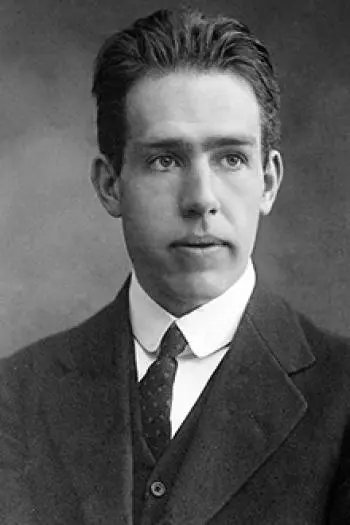
The Bohr atomic model, proposed by Danish physicist Niels Bohr in 1913, represented a significant turning point in atomic theory and transformed our appreciation of the fundamental structure of matter.
This model, based on innovative concepts of quantization and energy levels, not only offered an accurate explanation of the emission spectra of atoms, but also paved the way for the development of quantum mechanics.
This new theory of the atom laid the foundation for our current understanding of atomic and subatomic structure.
Background of the Rutherford model
Before the formulation of the Bohr model, the most widely accepted atomic model was the Rutherford model.
Ernest Rutherford, in 1911, postulated that atoms were made up of a positively charged central nucleus around which electrons rotated in elliptical orbits.
However, this model had a serious limitation: according to Maxwell's laws of classical electrodynamics, electrons in orbit should emit continuous electromagnetic radiation and, consequently, collapse into the nucleus in an extremely short time, contradicting the observed stability of the electrons. atoms.
Key principles of the Bohr model
Niels Bohr addressed this critical question by introducing three fundamental concepts into his atomic model:
1. Quantized energy levels

These levels were called "Bohr levels" and were quantified using integers, such as n = 1, n = 2, n = 3, and so on.
This quantization of energy levels elegantly solved the problem of continuous emission of electromagnetic radiation.
2. Quantization of angular momentum
Bohr postulated that electrons at each energy level could only move in permitted circular orbits, and that each orbit had a quantized angular momentum.
This feature implied that electrons could only possess specific, discrete values of angular momentum. This restriction on the angular momentum of the electrons was essential to prevent the continuous emission of electromagnetic radiation.
Bohr formulated a precise mathematical relationship to calculate these quantized angular moments.
3. Electronic transitions
In Bohr's model, electrons could change from one energy level to another only by absorbing or emitting energy.
When an electron absorbed energy, it ascended to an orbit further from the nucleus (higher energy level). On the other hand, when an electron emitted energy, it descended to an orbit closer to the nucleus (lower energy level).
These changes in energy levels were associated with the emission or absorption of photons of light, thus providing a precise explanation of atomic emission spectra.
Explanation of atomic spectra
One of the most notable achievements of Bohr's atomic model was its ability to explain the emission spectra of atoms.
These spectra consist of discrete spectral lines, characteristic of each chemical element, that are observed when an atom emits light when passing from higher to lower energy levels. These spectral lines provided strong experimental evidence for Bohr's model, supporting his theory of quantized energy levels.
Limitations and subsequent developments
Despite its successes, Bohr's model had important limitations.
- The Bohr atomic model can only explain the spectra of single-electron atoms (hydrogen). It cannot explain the spectra of multi-electron atoms.
- Since electrons move at very high speeds, they must be considered not only in classical physics but also in the theory of relativity.
- Wave-particle duality (De Broglie hypothesis) was not taken into account in Bohr's atomic model.
- According to Werner Heisenberg's uncertainty principle, the location and velocity of the electron in the atom cannot be determined simultaneously with absolute certainty. Therefore, the concept of "orbit" is erroneous.
- Finally, Bohr's model still does not mention neutrons in the nucleus.
Although his model was a significant improvement over Rutherford's atomic model, it was still based on some classical ideas that were not consistent with emerging quantum physics.
These limitations led to the development of quantum mechanics, which is the currently accepted theory for describing the structure of atoms and subatomic particles.
Quantum mechanics, formulated by scientists such as Werner Heisenberg and Erwin Schrödinger, replaced Bohr orbits with wave functions that describe the probability of finding an electron at a specific location around the nucleus.
Legacy of the Bohr model
Despite its limitations, Bohr's atomic model was a crucial milestone in the history of physics. He introduced fundamental concepts of quantum mechanics and laid the foundation for a deeper understanding of atomic structure.
Bohr's theory also influenced the later development of quantum theory, which revolutionized our understanding of physics at the subatomic level.
Summary: main features
The Bohr atomic model, proposed by Niels Bohr in 1913, was a theory that revolutionized our understanding of atomic structure. Its key points include:
-
Quantized energy levels: Electrons in an atom occupy discrete orbits called "energy levels."
-
Quantization of angular momentum: Electrons move only in allowed orbits with quantized angular momentum.
-
Electronic transitions: Electrons change energy level by absorbing or emitting energy in the form of photons.
Bohr's model explained atomic emission spectra and paved the way for quantum mechanics, although it had limitations in atoms with more electrons. His legacy lives on in today's understanding of atomic structure.